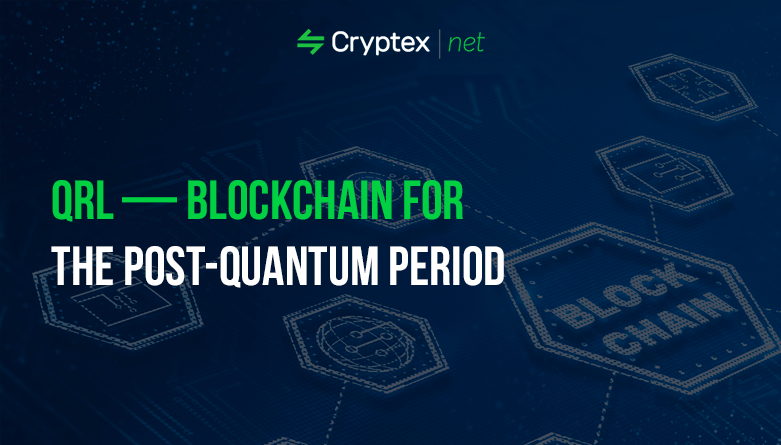QRL — blockchain for the post-quantum period
06.09.2022 | mnalilovich

The problem of cryptocurrencies and quantum computers is currently being raised more and more often in the community. And although in the near future, and most likely not only in the near future, the capabilities of quantum computers will not be enough to crack the encryption of existing cryptocurrencies, however, the most commonly used signatures of RSA, DSA and ECDSA, theoretically, remain quantum unstable. Although the open nature of blockchain allows you to change the source code, preventing the possibility of hacking, but it will take time. Some developers have already decided to implement the idea of quantum-resistant blockchains, and although it is unlikely that such cryptocurrencies will have a special future and a significant role in the crypto community, however, such projects may well exist as a test platform and as a kind of niche coin.
QRL — reliability and safety in the post-quantum period
Quantum Resistant Ledger has become one of the first public projects with declared resistance not only to classical, but also to quantum attacks. After the development, the project managers did not dare to release their brainchild for two years, preferring to stay in the test network. During this, in addition to their own efforts, the project team decided to conduct an external audit.
QRL became the first blockchain based on the extended Merkle signature scheme based on reusable addresses — XMSS. This signature scheme has been approved by the Internet Engineering Council and the National Institute of Standards and Technology of the United States.
Also, the cryptographic blockchain has the ability to update the signature scheme, in addition, developers can change the address format by choosing between one or another cryptographic hash function. All this became possible thanks to the introduction of variable key heights (variable key height) and variable signature space (variable signature space).
QRL wallets have already been released for all popular platforms, and desktop versions have the ability to integrate with hardware wallets.
Mining and emission
Unlike most modern projects, and especially projects since the release of the first version of QRL, the developers decided to limit the issue to a fairly small number of coins — only 105 million. At the same time, 13 million were reserved at the start, eight of which will be spent on supporting the project and developers. It was decided to limit the primary issue to only 52,000,000 QRLS.
Mining is currently carried out on the basis of the RandomX proof-of-work algorithm. This hashing algorithm was chosen for one main reason — the inability to mine on ASIC. This allows not only as many people as possible to get involved in the process of mining cryptocurrencies on central processors, but also increases the resistance to an attack by 51%.
QRL Community
The founder and ideological inspirer of the project was Peter Waterland, who published the white book QRL back in the already relatively distant 2016. However, it was not just difficult to implement a project of this kind alone, but almost impossible, especially in an acceptable time frame. Therefore, the QRL team includes not only programmers and financiers, but also specialists in a fairly narrow field of quantum physics research.
In addition, the founder decided to use an open development system, when everyone can contribute through the offer of improvements on the GitHab platform. The idea of a system of general voting of blockchain participants on certain changes was also adopted, which makes QRL similar in this principle to market leaders: bitcoin and Ethereum.
The future of QRL
The first thing the development team plans to change is the consensus—building algorithm. Instead of gluttonous proof of work done, it is planned to introduce proof of ownership shares. At the same time, the Falcon cryptographic hash function algorithm will be launched, and all development will switch to the modern programming language - Goland.
The developers also plan to add the smart contracts function to the blockchain, and declare openness to proposals and innovations. All this allows us to say that QRL will take, if not leadership positions, then at least play a worthy role in the development of cryptocurrencies.